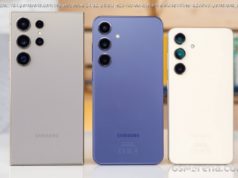A featherweight F2.8 standard zoom for APS-C mirrorless
The Sigma 18-50mm F2.8 DC DN Contemporary ($599) should appeal to photographers using APS-C sensor cameras. It’s the slimmest, lightest F2.8 zoom, while its bright, close-focusing optics offer real benefits for photographers looking to start off with just a kit lens. It’s available for Canon, Fujifilm, L-mount, and Sony camera systems, costs much less than first-party alternatives such as the Editors’ Choice-winning Sony E 16-55mm F2.8 G ($1,399.99), and is easier to carry around than our affordable Editors’ Choice winner, the $800 Tamron 17-70mm F2.8 Di III-A VC RXD.
Editors’ Note: This review was originally published on October 19, 2021. It has been updated to reflect changes in price and availability for additional camera systems.Design: An F2.8 for Smaller Cameras
The 18-50mm lives up to its small-and-light billing. It measures 2.9 by 2.6 inches (HD) and weighs just 10.2 ounces. It’s lighter and smaller than its closest competitor, the Tamron 17-70mm F2.8 (4.7 by 2.9 inches and 1.2 pounds), but sacrifices some coverage on both ends of the focal range to get there.
Sigma sells the lens in four versions, so you can get it for Canon RF, Fujifilm X, L-mount Alliance, and Sony cameras. Only a handful of L-mount cameras with APS-C sensors exist—the Leica CL and TL2 are the most recent. Canon owners should pay special attention as there aren’t any first-party F2.8 lenses made for APS-C cameras like the EOS R10. All of Fujifilm’s X series cameras and lenses are APS-C, but the Sigma stands tall as a value option that’s half the price of the $1,200 XF 16-55mm F2.8 R LM WR II. I reviewed the Sony version of the lens.
The lens optics cover the APS-C sensor of entry-level models like the Sony a6100 and midrange options like the Leica CL. I didn’t have ready access to an APS-C camera for this review, so I paired the lens with the full-frame Sony a7R IV. In that camera’s APS-C mode, it produces 26MP images.Construction: Sturdy, But Not All-Weather
The 18-50mm’s barrel is made from thermally stabilized composite—fancy words for high-quality plastics—with dust and splash protection at the mount only. The front element supports 55mm threaded filters and Sigma includes a petal-style lens hood that offers extra protection from smudges and flare. The glass isn’t protected with oil-repellent fluorine, so you need to take a little extra care when cleaning it.
The 18-50mm is smallest at the 18mm setting. Its inner barrel telescopes out to zoom in to tighter focal lengths, extending by about an inch. The zoom ring turns with a pleasing amount of resistance and stays in place once set. Like other zooms, the Sigma’s barrel has rubber ridges that help with grip, for example, when you’re wearing gloves in cold weather.Autofocus: Snappy Response, Useful Macro
The 18-55mm’s autofocus performance is top-notch. The STM motor drives focus quickly and quietly, racking from close to far in an instant. Manual focus is also an option, but I’m less happy with the experience. The focus control ring is narrow and close enough to the lens mount to be a little uncomfortable to turn. Aside from that gripe, it works as expected, with a nonlinear response and a very long throw—good for making precise adjustments.






